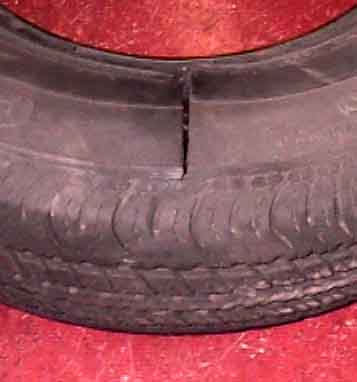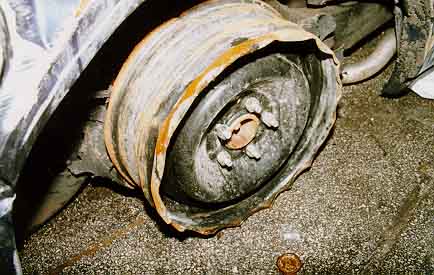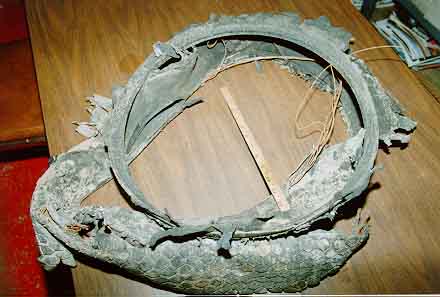Court actions arising from insurance claims often involve technical matters in the fields of forensic science and engineering. Accident reconstruction, failure analysis and engineering analysis, among other technical areas of expertise, contribute to the development of evidence that significantly impacts the course of a trial. The current legal system allows technical experts to opine on scientific information that is above the knowledge level of the typical juror. The intent of the court is to utilize the scientific expert testimony to help the "trier of fact" understand and rule reasonably on complex technical cases. This has lead to a plethora of "expert" witnesses offering opinions on virtually any subject; in some cases with virtually no basis and at virtually every hourly pay rate imaginable. In his 1991 book, "Galileo's Revenge: Junk Science in the Courtroom," Peter Huber implies that some expert testimony has little basis in scientific fact and is plain junk, hence the birth of the popular term, “junk science.” A recent television documentary by ABC focused on idiotic "scientific" testimony, an uncomplimentary exposé of obviously flawed science and the legal profession. The courts, appearing to be fed up with “junk science”, have attempted to correct the condition of unscientific scientific testimony through a Supreme Court decision in the 1993 Daubert v. Merrill Dow Pharmaceuticals court action (the Daubert Decision).
The Freye Test
Before discussing the consequences of the Daubert Decision, a quick review of a previous ruling involving scientific evidence is helpful. In the 1923 Freye v. United States case, the court ruled that in order for scientific expert testimony to be admissible, it must have general acceptance in the particular field of study. The standard that the testimony be accepted in the "relevant scientific community" was broad and subject to abuse. Many decisions on the validity of scientific analyses were left to the jury to decide. The jury, often unqualified to assess scientific evidence, would make decisions based on the expert's personality, fancy courtroom displays and simplistic experiments that may have been irrelevant. This opened the floodgates to self-proclaimed experts and the proliferation of “junk science”. The legal profession does not escape blame, as they are the ones who hire such "scientists" so that a case will make it to the jury where emotion may trump relevant fact and evidence.
The Daubert Decision
In Daubert v. Merrill Dow Pharmaceuticals, (509 U.S. 579, 1993), the U.S. Supreme Court concluded that trial judges should act as "gatekeepers" and not let in testimony based on “junk science”. When admitting expert testimony under the Federal Rules of Evidence, the U.S. Supreme Court identified the following 4 standards for the admissibility of scientific evidence:
1. Has the scientific theory or evidence been tested?
2. Has the scientific theory or evidence been published or subjected to peer review?
3. What is the error rate of the theory or technique and are there controlling standards?
4. Has the scientific community generally accepted the theory or technique?
The Supreme Court stressed that these 4 standards should be applied in a flexible manner and were non-exclusive. What has resulted, is what is called a "Daubert Hearing" where one side tries to knock out the expert testimony of the other side by applying one or more of the 4 gatekeeper guidelines. It has been argued that under Daubert, technical testimony based on deductive reasoning such as that used by fire investigators and accident reconstructionists was nonscientific and excluded under Daubert. Arguments have ensued over whether technical knowledge is scientific or whether fields such as fire investigation are scientific.
The Carmichael Decision
In Kumho Tire Company v. Patrick Carmichael (526 U.S., 1999), the Daubert Decision was revisited. A tire expert hired by Carmichael claimed a defect existed in a tire, manufactured by the Kumho Tire Company that caused an automobile accident, resulting in the death of one of the passengers. The tire in question was over 5 years old, had less than 2/32 tread depth in certain areas (would not pass inspection in many states) and at least 2 punctures that were inadequately repaired. There was also evidence of typical tire misuse, over- deflection and under-inflation. Despite the apparent evidence that the tire was old and worn out, the tire expert formulated an opinion that a defect in the tire caused a blowout and the accident. The methodology used by the tire expert was unusual. He characterized 4 symptoms of over-deflection :
(a) Shoulder tread wear (Figure 1)
(b) Bead groove pattern on the tire
(c) Sidewall deterioration (Figure 2)
(d) Marks on tire rim flange

FIGURE 1

FIGURE 2

FIGURE 3

FIGURE 4

FIGURE 5

FIGURE 6
Kumho Tire Company moved to exclude Carlson's testimony based on one of the Daubert "gatekeeper" tests that the methodology was nonscientific and therefore unreliable. In my opinion, the court was correct in excluding this expert testimony, because of the momentous leap from general tire failure modes to a specific opinion on an existing defect. The Daubert Decision was interpreted narrowly that guidelines would be placed on scientists but not on experts in other fields. The Supreme Court decision in the Carmichael case concluded that the trial judge is not only a scientific gatekeeper but also a gatekeeper of testimony based on "technical and other specialized knowledge". This broadened the scope of the Daubert Decision to include not only scientists, but also engineers and other technologists. Like science, engineering relies on scientific knowledge and methodology, as do many other technical fields such as agriculture, handwriting analysis, and property evaluation.
The Aftermath
The full meaning of the decisions has not quite filtered down to judges and attorneys who are involved in technically related litigation. In Joechle v. Brown (Circuit Court of Cook County, IL 94 L 13346), the judge asked an expert if the particular procedure, relied upon for an opinion, had been used in previous court cases. The expert indicated that he did not know of usage in other court cases. The judged used this response as a basis to exclude testimony based on Daubert. In my opinion, the judge erred in that she focused on usage in previous court cases, which is scientifically irrelevant. What is relevant, is the usage of the particular methodology in the scientific community. The particular calculations and procedure at issue had been used and accepted in the scientific community. The Daubert Decision makes nonscientists scientific gatekeepers. This may result in "good science" being excluded from the courtroom. A prime example is the understanding of the scientific field of biomechanics (see Insurance Adjuster, April 1985). Biomechanics is the study of the effects of forces and motion on the human body. Engineers perform biomechanical analyses to design automobile airbags, ski bindings, aircraft ejection seats and many other products. Many judges do not understand the difference between biomechanics and the field of medicine. They often mistakenly consider biomechanical analyses to be medical testimony and are known to bar such testimony when provided by engineers or other non-physicians that are skilled in that field. Likewise, an electrical engineer may be barred from opining on a mechanical device even though mechanical and electrical engineers have virtually identical coursework in the first 2 years of engineering school. There are many mechanical engineers who are skilled in failure analysis yet their testimony on failure modes analysis may be barred because they do not have a degree in metallurgy, even though courses on metallurgy are an integral part of mechanical engineering curricula. Some courts have resorted to hiring "independent" experts to evaluate the scientific testimony from each side. Their reports may act as a basis for a decision in a particular action.
In the future, the defense bar will most likely be helped by the broadened Daubert Decision, in that there is a better opportunity to exclude testimony. The plaintiff bar will most likely be hurt, in that fewer cases will make it to a jury after surviving a Daubert challenge. More intense pretrial Daubert related court battles are expected, driving more claimants to more economical and less time consuming alternative dispute resolution.
FOR TECHNICAL ARTICLES CONTACT CLAIMS MAGAZINE AND ASK
FOR A REPRINT OF A PAST TECHNICAL NOTEBOOK ARTICLE
CLAIMS MAGAZINE
BACK TO C. ROBERTS CONSULTING ENGINEERS HOME PAGE,
WWW.CROBERTS.COM
WWW.CROBERTS.COM